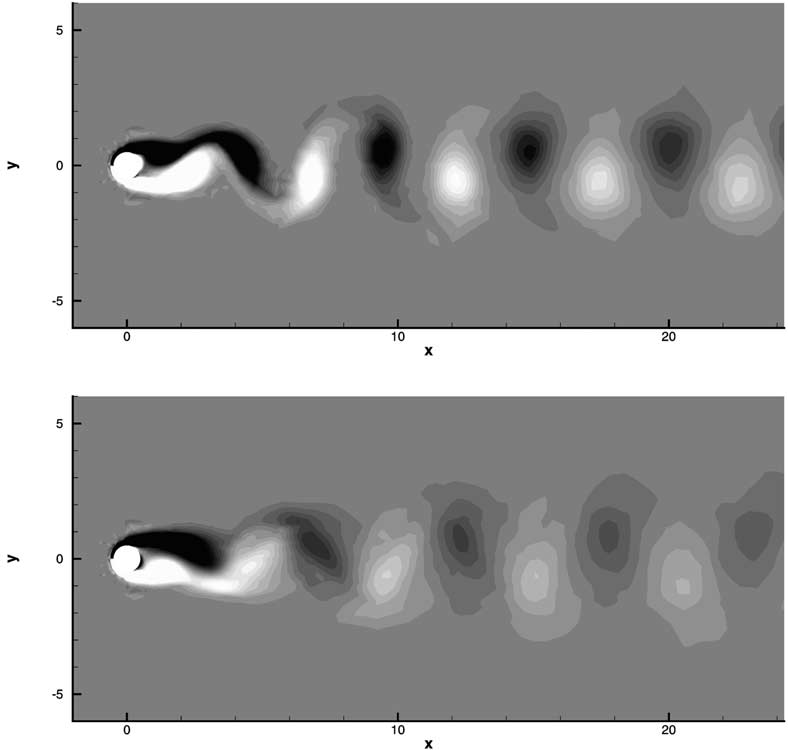SCI Publications
2003
A.A. Samsonov, E.G. Kholmovski, C.R. Johnson.
“Image Reconstruction from Sensitivity Encoded MRI Data Using Extrapolated Iterations of Parallel Projections Onto Convex Sets,” In SPIE Medical Imaging, Vol. 5032, pp. 1829--1838. 2003.
A.A. Samsonov, E.G. Kholmovski, C.R. Johnson.
“Determination of the Sampling Density Compensation Function Using a Point Spread Function Modeling Approach and Gridding Approximation,” In Proceedings of 11th Annual Meeting of the International Society for Magnetic Resonance in Medicine (ISMRM), Toronto, pp. 477. 2003.
A.A. Samsonov, E.G. Kholmovski, C.R. Johnson.
“A Modified POCSENSE Technique for Accelerated Iterative Reconstruction from Sensitivity Encoded MRI Data,” In Proceedings of 11th Annual Meeting of the International Society for Magnetic Resonance in Medicine (ISMRM), Toronto, pp. 477. 2003.
A.R. Sanderson, C.R. Johnson.
“Display of Vector Fields Using a Reaction-Diffusion Model,” SCI Institute Technical Report, No. UUSCI-2003-002, University of Utah, June, 2003.
J. Schpok, J. Simons, D.S. Ebert, C.D. Hansen.
“A Real-Time Cloud Modeling, Rendering, and Animation System,” In ACM Symposium on Computer Animation, San Diego, pp. 160--166. 2003.
Y. Serinagaoglu, D.H. Brooks, R.S. MacLeod.
“Prior Model Selection for Bayesian Inverse Electrocardiography,” In Proceedings of the NFSI Conference 2003, Chieti, Italy, 2003.
Y. Serinagaoglu, R.S. MacLeod, D.H. Brooks.
“A Bayesian Approach to Inclusion and Performance Analysis of Using Extra Information in Bioelectric Inverse Problems,” In Proceedings of the IEEE International Conference on Image Processing, 2003.
Y. Serinagaoglu, D.H. Brooks, R.S. MacLeod.
“Combining Numerical and Physiological Constraints in Inverse Electrocardiography,” In Int. J. Bioelectromag., Vol. 5, No. 1, pp. 215--217. 2003.
J.G. Stinstra, B. Hopenfeld, R.S. MacLeod.
“A Model for the Passive Cardiac Conductivity,” In Int. J. Bioelectromag., Vol. 5, No. 1, pp. 185--186. 2003.
M. Styner, G. Gerig, S. Pizer, S. Joshi.
“Automatic and Robust Computation of 3D Medial Models Incorporating Object Variability,” In International Journal of Computer Vision - Special UNC-MIDAG issue, Vol. 55, No. 2, Edited by O Faugeras and K Ikeuchi and J Ponce, Kluwer Academic, pp. 107--122. November-December, 2003.
T. Tasdizen, R.T. Whitaker, P. Burchard, S. Osher.
“Geometric Surface Processing via Normal Maps,” In ACM Transactions on Graphics, 2003.
T. Tasdizen, R.T. Whitaker.
“Cramer-Rao Bounds for Nonparametric Surface Reconstruction from Range Data,” In Proceedings of Fourth International Conference on 3-D Imaging and Modeling, pp. 70--77. October, 2003.
T. Tasdizen, R.T. Whitaker.
“Anisotropic diffusion of surface normals for feature preserving surface reconstruction,” In Proceedings of Fourth International Conferenceon 3-D Imaging and Modeling, pp. 353--360. October, 2003.
T. Tasdizen, R.T. Whitaker.
“Feature preserving variational smoothing of terrain data,” In IEEE Workshop on Variational, Geometric and Level Set Methods in Computer Vision, October, 2003.
X. Tricoche, G. Scheuermann.
“Topology Simplification of Symmetric, Second Order 2D Tensor Fields,” In Geometric Modeling Methods in Scientific Visualization, Springer, Berlin, pp. 171--184. 2003.
R. Van Uitert, D. Weinstein, C.R. Johnson.
“Volume Currents in Forward and Inverse Magnetoencephalographic Simulations Using Realistic Head Models,” In Annals of Biomedical Engineering, Vol. 31, pp. 21--31. 2003.
R. Van Uitert, C.R. Johnson.
“Influence of Brain Conductivity on Magnetoencephalographic Simulations in Realistic Head Models,” In The 25th Annual International Conference of the IEEE Engineering In Medicine And Biology Society, Vol. 3, pp. 2136--2139. September, 2003.
D.M. Weinstein, J.V. Tranquillo, C.S. Henriquez, C.R. Johnson.
“BioPSE Case Study: Modeling, Simulation, and Visualization of Three Dimensional Mouse Heart Propagation,” In International Journal of Bioelectromagnetism, Vol. 5, No. 1, pp. 314--315. 2003.
C. Wyman, C.D. Hansen.
“Penumbra Maps: Approximate Soft Shadows in Real-Time,” In Eurographics Rendering Symposium, Belguim, pp. 202--207. 2003.
D. Xiu, G.E. Karniadakis.
“Modeling Uncertainty in Flow Simulations via Generalized Polynomial Chaos,” In Journal of Computational Physics, Vol. 187, No. 1, pp. 137--167. 2003.
DOI: 10.1016/S0021-9991(03)00092-5

Keywords: Polynomial chaos, Uncertainty, Fluids, Stochastic modeling
Page 117 of 144
